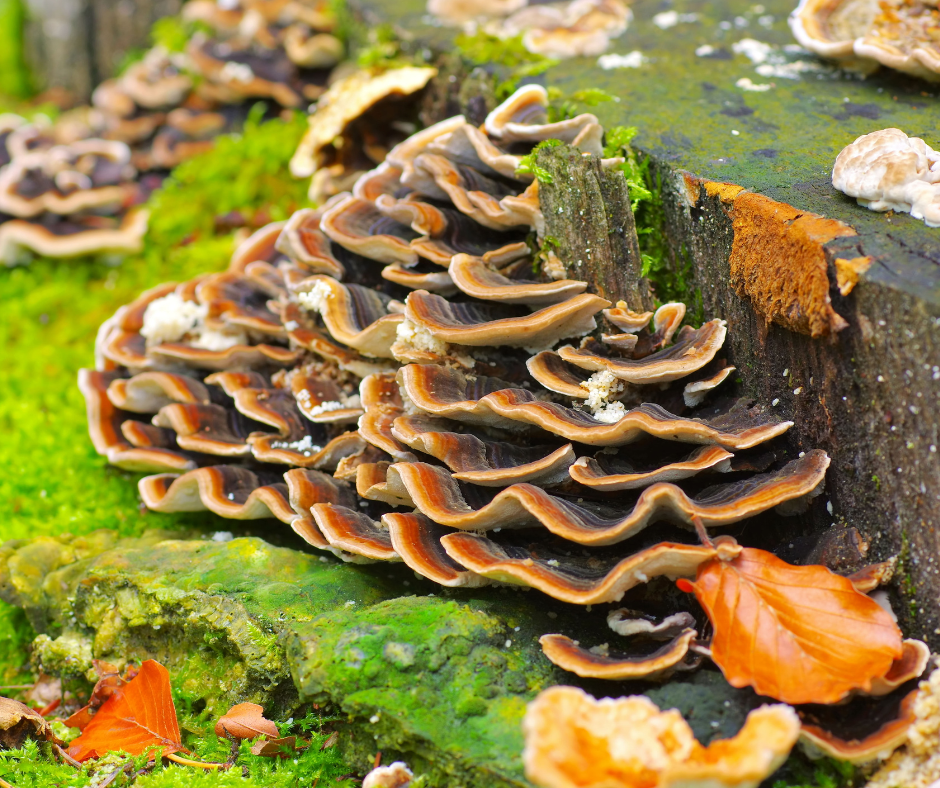Mushrooms are not only a culinary delight or the silent inhabitants of the woods, but also little ecological superheroes! With their incredible ability to transform and degrade complex substances, they can revolutionise the world of environmental remediation.
- Mushrooms as allies in industry and the environment
- Mushroom sorting and disposal
- Mushrooms in the service of innovation
Mushrooms as allies in industry and the environment
Mushroom strains are increasingly being studied and used in the remediation of industrial and urban wastewater, as well as soils. The technical term is mycorrhization and it is a process in which the mycelium of fungi secrete enzymes and acids that attack and decompose pollutants.
As well as being very cheap, fungi have the ability to digest and transform complex compounds, industrial waste, pollutants from agro-industry, pharmaceuticals and plastics. They are able to degrade and break down dead material, e.g. lignin from trees, and transform it into simpler, living material to feed plants and animals.
White-rot fungi, in particular, are known for their extraordinary ability to degrade a wide range of persistent organic compounds, reducing toxicity, thanks to their unique enzymatic endowment.
These enzymes break down the complex chemical bonds present in pollutants, transforming them into less toxic or even harmless compounds.
Mushroom sorting and disposal
The careful selection of fungal strains is crucial to ensure that they are not harmful to other organisms and that they are effective in degrading specific pollutants in the context of remediation.
It is important that the mushrooms chosen are autochthonous or, at least, non-invasive, so as not to disturb the local ecological balance. Indeed, during the reclamation process, mushrooms can produce some toxic secondary metabolites and require careful management to avoid ecological damage.
The risk to human health, although low, cannot be neglected. Immunocompromised individuals or those with specific allergies may be vulnerable to infection or allergic reactions caused by the fungi used in remediation.
That is why it is so important to confine the ‘mushroom and reclamation area’.
At the end of the life cycle, post-cleaning waste management is a key issue. Contaminated mushrooms and materials must be treated and disposed of safely to prevent further environmental or health risks. This includes encapsulation, thermal treatment or other forms of disposal that neutralise residual pollution.
Mushrooms in the service of innovation
The fungal collection of the Mycotheca Universitatis Taurinensis (MUT) in Turin is an excellent example of how scientific research can have a direct and positive impact on the environment and society.
This mycological collection, one of the most important banks of fungal biodiversity in Italy, not only preserves a wide range of species, but also provides vital strains for bioremediation projects such as Life Biorest.
The European Life Biorest project demonstrated how the use of native fungi can be an effective method for decontaminating formerly industrialised soils, bringing them within the threshold limits for residential and public use and restoring the ecological functions of the site.
Mycorrhization therefore represents a fascinating frontier of environmental science. It is an approach that promotes biodiversity and sustainability in all its aspects, demonstrating that technological innovation can go hand in hand with environmental improvement.
Play for the planet!
